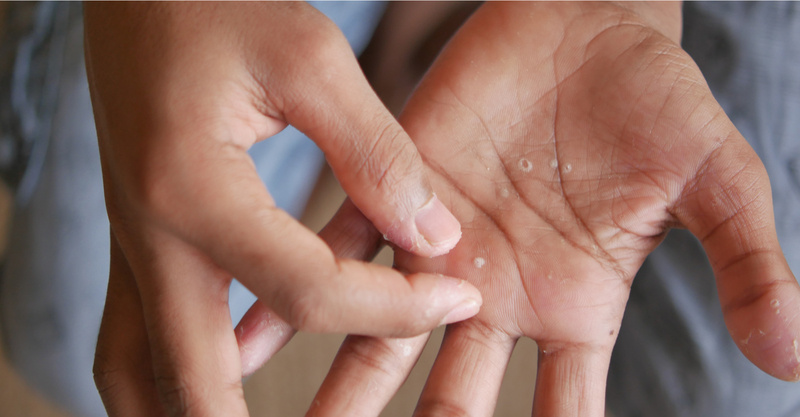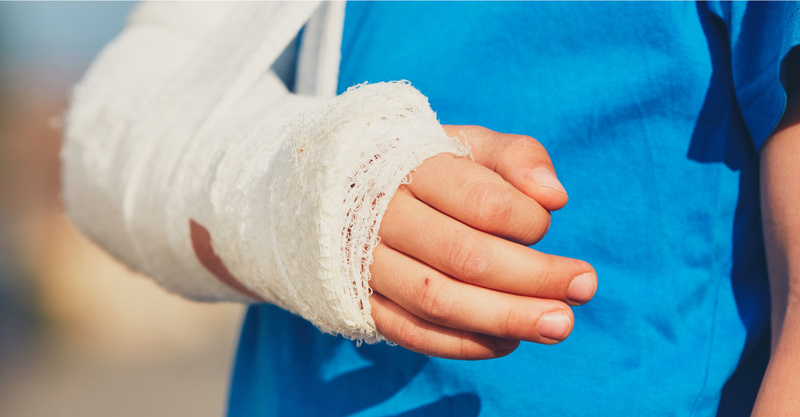Key Points
- Recognize signs and symptoms of a rash and know when to seek urgent care for severe cases.
- Understand the various causes of skin rashes, including allergies, infections, and dermatological conditions.
- Learn prevention tips to avoid rashes and the importance of seeking medical attention for proper diagnosis and relief.
A rash is an area of the skin that is irritated, according to the NIH. Most rashes appear red and slightly swollen—some may be itchy or develop blisters. According to the American Academy of Dermatology (AAD), rashes are caused by an allergy or side effect of exposure to something. The Mayo Clinic lists common things that may cause a rash in someone with a sensitivity—this list includes:
- Plants, weeds, and grasses
- Animals
- Insects
- Medications
- Foods
- Chemicals (including those in dyes, elastic, latex, or rubber products)
- Cosmetics, soaps, and detergents
- Pollutants
- Conditions like eczema, psoriasis, or some STDs
If you are experiencing a rash, the Mayo Clinic notes that it is important to seek medical attention to determine the cause of the rash and receive proper treatment. For many people, going to urgent care is a convenient option. Urgent care clinics are equipped to diagnose and treat mild to moderate health conditions, including rashes.
Signs and Symptoms of a Rash
Recognizing the symptoms of a rash will help you understand when to see a doctor. The Mayo Clinic notes that the symptoms of a rash may include:
- Redness
- Itching
- Bumps or blisters
- Scaling or crusting
- Pain or discomfort
The AAD notes that some rashes (like ones associated with an allergy) can appear quickly, while others may develop over several hours.
Causes of Skin Rashes
If you have symptoms of a rash, it's important to determine the underlying cause so you can get proper treatment and avoid future outbreaks. The Mayo Clinic notes that rashes can be caused by various factors, including some of the following.
Allergies
Allergic reactions can cause a rash to appear on your skin, according to the Mayo Clinic. Common allergens include certain foods, cosmetics, soaps, medications, and insect bites. If you suspect that your rash is caused by an allergy, it's important to identify the allergen and avoid it in the future, according to the NIH.
Infections
Viral and bacterial infections can also cause a rash, according to the Mayo Clinic. For example, chickenpox is a viral infection that often causes a rash with itchy, fluid-filled blisters. Bacterial infections such as impetigo can also cause a rash.
Medications
Certain medications can cause a rash as a side effect, according to the NIH. Antibiotics, anticonvulsants, and nonsteroidal anti-inflammatory drugs (NSAIDs) are some examples of medications that can cause a rash.
Dermatological Conditions
Skin conditions such as eczema, psoriasis, and rosacea can cause a rash, according to the Cleveland Clinic. The Cleveland Clinic also notes that these conditions are often chronic and require ongoing treatment to manage symptoms.
Environmental Factors
Exposure to certain environmental factors can cause a rash, according to the NIH. For example, contact with poison ivy, oak, or sumac can often cause an itchy, red rash. Other environmental factors that can cause a rash include heat, cold, and sun exposure.
Autoimmune Disorders
Autoimmune disorders such as lupus and rheumatoid arthritis can cause a rash as a symptom of a flare-up. These conditions occur when the immune system attacks healthy cells in the body, leading to inflammation and other symptoms, according to the Mayo Clinic.
When to Seek Urgent Care for Rash
When dealing with skin rashes, it is important to know when you can try a home remedy and when it is time to seek urgent care.
The Mayo Clinic recommends that you seek urgent care if you have a rash that is accompanied by severe symptoms such as fever, chills, or body aches. These symptoms could indicate a serious infection or other medical condition that requires immediate treatment. Additionally, the NIH recommends seeking emergency care in the following situations.
Rapidly Spreading Rash
If your rash is rapidly spreading and getting worse, it may be a sign of a severe allergic reaction or infection, according to the Mayo Clinic. They also note that you should seek care at an emergency room or urgent care clinic right away if you notice that your rash is spreading quickly or if it is covering a large area of your body.
Previous Allergic Reactions
If you have had an allergic reaction to a medication or food in the past, you should seek medical attention if you develop a rash. This could be a sign of a severe allergic reaction that requires immediate treatment, according to the Mayo Clinic.
Difficulty Breathing
If you have a rash and develop difficulty breathing, you should seek emergency care right away, according to the Mayo Clinic. Difficulty breathing could be a sign of a severe allergic reaction or other medical emergency that requires immediate attention.
Swelling of the Face, Lips, or Tongue
The Mayo Clinic also notes that you should seek emergency care right away if you have a rash along with swelling of the face, lips, or tongue. They note that this could be a sign of a severe allergic reaction that requires immediate medical intervention.
What to Expect at Urgent Care For a Rash
During your visit to urgent care for a rash, you can expect to be seen by a healthcare provider who will examine your skin and ask you questions about your symptoms and medical history. They may also perform tests (such as a skin biopsy or allergy testing) to help diagnose the cause of your rash, according to the AAD. Additionally, the NIH writes that for some recurring skin rashes, the culprit may be found during a process of elimination (for example, removing or replacing home products one at a time).
Once a diagnosis is made, your healthcare provider will recommend a treatment plan to help relieve your symptoms and reduce the chances of experiencing future rashes. The NIH reports that some treatment plans may include one or more of the following.
Medications
Depending on the cause and severity of your rash, your healthcare provider may prescribe oral medications. Some common oral medications listed by the NIH include antihistamines, corticosteroids, or immunosuppressants.
Topical Treatments
Your healthcare provider may also recommend topical treatments (such as creams or ointments) to help relieve itching and inflammation.
Phototherapy
Phototherapy involves exposing the affected area of the skin to ultraviolet light and is a common treatment for reducing inflammation of the skin, according to the NIH.
Special Home Care Instructions
Your healthcare provider may provide you with instructions on how to care for your rash at home. Some home care treatments may include avoiding irritants, keeping the affected area clean and dry, and applying topical treatments as directed.
Prevention of Rash
Rashes can be uncomfortable and even painful. Fortunately, there are some steps you can take to help prevent some types of rashes. Here are some tips from the AAD and Mayo Clinic.
Avoiding Allergens
One of the most common causes of rashes, according to the Mayo Clinic, is exposure to something you are allergic to. This can include things like pollen, pet dander, and certain foods or cosmetic products. If you know that you are allergic to something, it is important to avoid it as much as possible. You can also take steps to reduce your exposure to allergens by keeping your home clean and free of dust and other irritants.
Good Hygiene
Good hygiene can help prevent some types of rashes, according to the AAD. Good hygiene includes washing your hands regularly and taking showers or baths as often as your doctor or dermatologist recommends. You should also avoid sharing certain personal items like towels and washcloths, as these can spread bacteria and other germs, according to the AAD.
Using Protective Clothing
If you are going to be spending time outdoors, it is important to wear protective clothing for many reasons. One reason is to protect your skin from certain types of plants and insects that could cause a rash. The Mayo Clinic recommends wearing long-sleeved shirts and pants if you are in an area where you may come in contact with plants or insects.
Staying Hydrated
Drinking plenty of water is important for many reasons—one reason is for keeping your skin healthy and hydrated. When your skin is dry, it is more susceptible to rashes and other irritations, notes the Mayo Clinic.
Protecting Your Skin From Sun Exposure
Sun exposure can irritate the skin and cause a rash—especially if you have sensitive skin or take certain medications. If you are going to be spending time outdoors, the AAD recommends wearing sunscreen and protective clothing to avoid getting too much UV. You should also try to avoid being outside during the hottest parts of the day when the sun's rays are the strongest.
Complications of Rashes
Rashes can be uncomfortable and unsightly, but some rashes can also lead to complications if left untreated, according to the Mayo Clinic.
Secondary Infections
If you scratch your rash, you can break the skin and introduce bacteria into the wound, according to the Mayo Clinic. This can lead to an infection, which may require antibiotics to treat. Signs of an infection include redness, warmth, swelling, and pus, according to the Mayo Clinic.
Scarring
If you scratch your rash too much, you can permanently damage the skin and cause scarring. This is especially true if you have a deep, itchy rash that you scratch repeatedly, according to the Mayo Clinic. Scarring can be permanent and may require cosmetic treatment to improve the appearance of the affected area.
Dealing with a rash can have significant psychological impacts, especially if the rash is visible to others. This can impact people who have chronic eczema, or psoriasis. Dealing with chronic rashes (such as eczema or psoriasis) can be embarrassing and even lead to anxiety and depression according to the AAD.
It's important to remember that you are not alone. Many people struggle with these feelings, and there are resources available to help you cope. Consider seeking support from a mental health professional if you are dealing with chronic rashes.
Tips for Preventing Rashes
To help prevent rashes, the Mayo Clinic and AAD have several recommendations, including:
- Avoiding contact with known irritants or allergens
- Keeping your skin clean and dry
- Wearing loose-fitting clothing made from breathable materials
- Using sunscreen to protect your skin from sunburn
- Avoiding sharing personal items, such as towels or razors, with others
Importance of Seeking Care for Rashes
Rashes can be caused by various factors, including allergies, infections, and skin conditions. Some rashes can be a sign of a more serious underlying condition, such as an autoimmune disorder or cancer, according to the Mayo Clinic. It is important to get the cause of your rash diagnosed so that you can get the right treatment and possibly avoid more rashes in the future. Prompt care can also help you get relief from the discomfort of dealing with a rash.
Frequently asked questions
What is a rash?
A rash is an area of the skin that becomes irritated, often appearing red and slightly swollen. It may also be itchy or develop blisters. Rashes are typically caused by an allergy or a reaction to exposure to certain substances or conditions.What are some common causes of rashes?
Rashes can be caused by a variety of things including plants, weeds, grasses, animals, insects, medications, foods, chemicals, cosmetics, soaps, detergents, pollutants, and certain skin conditions like eczema, psoriasis, or some sexually transmitted diseases.What are the symptoms of a rash?
Symptoms of a rash may include redness, itching, bumps or blisters, scaling or crusting, and pain or discomfort. Some rashes can appear quickly, while others may develop over several hours.When should I seek urgent care for a rash?
You should seek urgent care for a rash if it is accompanied by severe symptoms such as fever, chills, or body aches. Other signs that you need immediate medical attention include a rapidly spreading rash, difficulty breathing, or swelling of the face, lips, or tongue.What can I expect during a visit to urgent care for a rash?
At an urgent care visit for a rash, a healthcare provider will examine your skin and ask about your symptoms and medical history. They may perform tests like a skin biopsy or allergy testing to diagnose the cause of your rash. Once a diagnosis is made, they will recommend a treatment plan to relieve your symptoms and prevent future rashes.What are some possible treatments for rashes?
Treatment for rashes may include oral medications like antihistamines, corticosteroids, or immunosuppressants, topical treatments such as creams or ointments, phototherapy, and special home care instructions like avoiding irritants, keeping the affected area clean and dry, and applying topical treatments as directed.How can I prevent rashes?
You can prevent rashes by avoiding contact with known irritants or allergens, keeping your skin clean and dry, wearing loose-fitting clothing made from breathable materials, using sunscreen to protect your skin from sunburn, and not sharing personal items like towels or razors with others.What are some complications of untreated rashes?
Untreated rashes can lead to secondary infections if the skin is broken by scratching, which may require antibiotic treatment. Excessive scratching can also cause permanent scarring. Chronic rashes, like eczema or psoriasis, can have significant psychological impacts, leading to feelings of embarrassment, anxiety, and depression.
Solv has strict sourcing guidelines and relies on peer-reviewed studies, academic research institutions, and medical associations. We avoid using tertiary references.


 LinkedIn
LinkedIn










